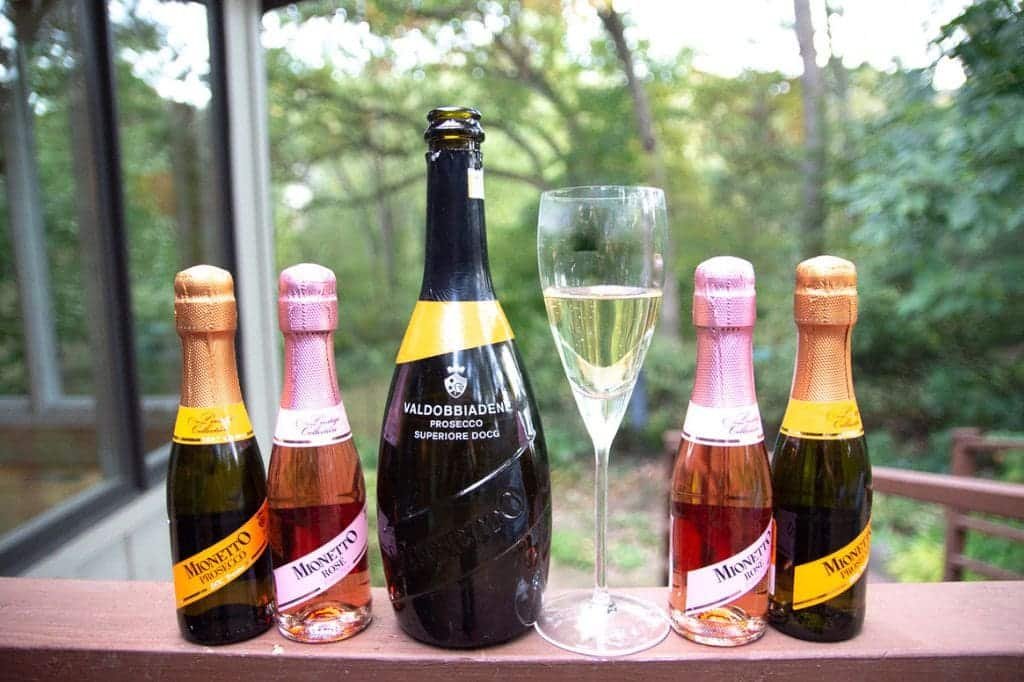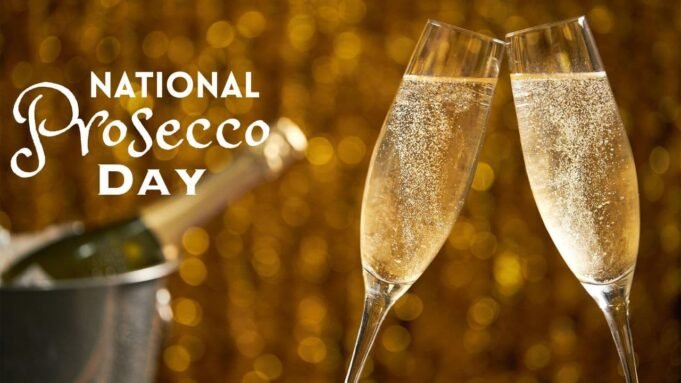National Prosecco Day, celebrated on August 13, is a vibrant tribute to the sparkling wine that captures the essence of summer’s joy. Originating from Italy’s Veneto region, Prosecco’s lively bubbles and fruity notes of apple, pear, and citrus make it a favorite for celebrations across the United States.
This day invites everyone to savor the light, refreshing taste of Prosecco, whether at a beachside gathering or a cozy brunch. Unlike competitors, this guide dives deep into Prosecco’s history, food pairings, and celebration ideas, filling gaps in existing content. In this article, I will share detailed insights on celebrating National Prosecco Day, its origins, perfect pairings, and more to elevate your experience.
When Is National Prosecco Day 2025?
National Prosecco Day 2025 falls on August 13, a Wednesday. This date celebrates the vibrant sparkling wine from Italy’s Veneto region, perfectly timed to capture summer’s joyful spirit. The mid-August date aligns with Prosecco’s refreshing, bubbly nature, ideal for warm-weather gatherings.
What Is the History of National Prosecco Day?
National Prosecco Day, established in 2016 by Riondo Prosecco and approved by National Day Calendar, celebrates sparkling wine from Italy’s Veneto region. Named after the village of Prosecco, the wine’s history traces back to 1593, when Englishman Fynes Moryson noted “Prosecho” among Italy’s finest wines.
Originally made from the Prosecco grape (renamed Glera in 2009), it evolved with the Charmat method, creating its signature bubbles in tanks. Global sales surged in the 2000s, with the UK importing 25% of Italy’s production by 2010. In 2019, the Prosecco hills of Conegliano and Valdobbiadene earned UNESCO World Heritage status, recognizing their cultural and viticultural significance.
Related: National White Wine Day
How Can You Celebrate National Prosecco Day 2025?
Celebrating National Prosecco Day on August 13, 2025, is simple and fun, with options for every taste:
- Host a Tasting Party: Sample Prosecco varieties—spumante (fully sparkling), frizzante (lightly sparkling), or tranquillo (still). Pair with appetizers like shrimp or bruschetta.
- Mix Cocktails: Create a Bellini (Prosecco and peach puree) or Aperol Spritz for a refreshing twist.
- Join Local Events: Visit bars or wineries offering Prosecco specials or attend wine festivals.
- Virtual Experience: Take an online tour of Veneto’s Prosecco hills or join a virtual tasting with friends.
- Share on Social Media: Post your celebration with #NationalProseccoDay to connect with others.
Choose organic Prosecco to support sustainable winemaking and elevate your summer gathering.
What Are the Best Activities for National Prosecco Day?
Make National Prosecco Day 2025 memorable with these engaging activities:
- Prosecco Brunch: Host a brunch with Prosecco mimosas, pairing them with eggs Benedict or fresh fruit platters.
- Food Pairing Workshop: Organize a tasting event to match Prosecco with cheeses, seafood, or charcuterie, exploring flavor combinations.
- Virtual Veneto Tour: Explore the Prosecco hills of Conegliano and Valdobbiadene through online winery tours, learning about production.
- DIY Cocktail Bar: Set up a home bar with Prosecco-based cocktails like Spritz or French 75 for guests to customize.
- Wine Festival Visit: Attend local or regional wine events featuring Prosecco, often with live music or food stalls.
These activities highlight Prosecco’s versatility, perfect for casual or upscale celebrations.
Read Also: National Julienne Fries Day
What Are the Best Food Pairings for Prosecco?
Prosecco’s high acidity and fruity flavors (apple, pear, citrus, melon) make it a versatile pairing for various dishes. Here’s a detailed guide:
| Prosecco Type | Best Pairings | Flavor Notes |
| Spumante | Crab cakes, scallops, creamy cheeses | Citrus, apple, floral |
| Frizzante | Prosciutto, bruschetta, light salads | Pear, melon, subtle almond |
| Tranquillo | Grilled vegetables, fresh fruit, and sushi | Peach, apricot, crisp |
| Rosé Prosecco | Cured meats, Hawaiian pizza, and berries | Red fruit, apple, slight toast |
Prosecco’s bubbles cleanse the palate, balancing fatty or fried foods like jalapeno poppers or corn dogs. Its acidity cuts through rich cheeses, preventing palate fatigue, while lighter dishes enhance its refreshing notes. For dessert, pair with fruit tarts or lemon sorbet.
What Are Some Fun Facts About Prosecco?
Prosecco’s vibrant history and unique traits make it a fascinating wine. Here are five engaging facts to share on National Prosecco Day:
- Massive Production: In 2018, over 600 million bottles of Prosecco were produced, reflecting its global popularity.
- Bubble Variety: Spumante is the bubbliest Prosecco, followed by frizzante with lighter fizz, and tranquillo, a still wine with no bubbles.
- Glera Grape Dominance: Prosecco is made primarily from Glera grapes, with up to 15% of other varieties like Pinot Noir for rosé versions.
- Charmat Method: Unlike Champagne, Prosecco’s bubbles are created via the Charmat method, fermenting wine in large tanks for a fruitier flavor.
- UK Shortage Scare: In 2016, the UK nearly ran out of Prosecco due to soaring demand, highlighting its global craze.
These facts showcase Prosecco’s versatility and cultural impact, perfect for sparking conversation at your August 13 celebration.
Read More: International Lammas Day 2025
What Are the Different Types of Prosecco?

Prosecco comes in distinct varieties, each with unique characteristics suited for different occasions. Here’s a breakdown:
| Type | Bubble Level | Flavor Profile | Best For |
| Spumante | Fully sparkling | Citrus, apple, white flowers | Celebrations, seafood dishes |
| Frizzante | Lightly sparkling | Pear, melon, subtle almond | Casual gatherings, appetizers |
| Tranquillo | Still (no bubbles) | Peach, apricot, crisp | Light meals, sushi |
| Rosé Prosecco | Fully or lightly sparkling | Red fruit, apple, slight toast | Desserts, cured meats |
- Spumante: The most popular, with lively bubbles, ideal for toasts or pairing with creamy cheeses.
- Frizzante: Less fizzy, perfect for relaxed sipping with bruschetta or salads.
- Tranquillo: Rare, non-sparkling Prosecco, great for lighter dishes like grilled vegetables.
- Rosé Prosecco: Introduced in 2020, blend Glera with Pinot Noir for a pink hue and berry notes, excellent with desserts.
These varieties, mainly from Veneto’s Conegliano and Asolo regions, cater to diverse tastes, making Prosecco a versatile choice for National Prosecco Day.
Why Is Prosecco So Popular in the U.S.?
Prosecco’s rise to fame in the U.S. stems from its affordability, versatility, and vibrant appeal. Key reasons include:
- Budget-Friendly: Often priced under $20, Prosecco offers high quality without Champagne’s hefty cost.
- Versatile Pairings: Its light, fruity flavors (apple, pear, citrus) suit casual brunches, upscale dinners, or cocktails like the Aperol Spritz.
- Market Dominance: Prosecco surpassed 4 million cases sold in the U.S., per Impact Databank, making it the top-selling sparkling wine.
- Cultural Appeal: It embodies Italy’s “la dolce vita” (the good life), resonating with younger audiences seeking fun, approachable wines.
- Low-Alcohol Trend: With lower alcohol content than many wines, Prosecco fits the growing demand for refreshing, easy-drinking options.
Its role in cocktail culture and summer festivities makes it a staple for National Prosecco Day celebrations on August 13.
Read More: Kadooment Day
How Is Prosecco Made?
- Grape Harvesting: Primarily uses Glera grapes from Veneto and Friuli-Venezia Giulia, harvested in late summer.
- Primary Fermentation: Grapes are pressed and fermented into a still wine, preserving fruity notes like apple and pear.
- Charmat Method: The wine undergoes secondary fermentation in large stainless steel tanks, creating bubbles. This differs from Champagne’s bottle fermentation, resulting in a fresher, fruitier taste.
- Bottling: The sparkling wine is filtered and bottled under pressure to maintain its fizz.
- Sustainability: Many producers now use organic or biodynamic methods, responding to eco-conscious consumer demand.
This efficient process, centered in regions like Conegliano Valdobbiadene, ensures Prosecco’s affordability and vibrant flavor for National Prosecco Day.
What Are the Different Types of Prosecco?
| Type | Bubble Level | Flavor Profile | Best For |
| Spumante | Fully sparkling | Citrus, apple, white flowers | Celebrations, seafood dishes |
| Frizzante | Lightly sparkling | Pear, melon, subtle almond | Casual gatherings, appetizers |
| Tranquillo | Still (no bubbles) | Peach, apricot, crisp | Light meals, sushi |
| Rosé Prosecco | Fully or lightly sparkling | Red fruit, apple, slight toast | Desserts, cured meats |
- Spumante: The most popular, with lively bubbles, ideal for toasts or pairing with creamy cheeses.
- Frizzante: Less fizzy, perfect for relaxed sipping with bruschetta or salads.
- Tranquillo: Rare, non-sparkling Prosecco, great for lighter dishes like grilled vegetables.
- Rosé Prosecco: Introduced in 2020, blend Glera with Pinot Noir for a pink hue and berry notes, excellent with desserts.
These varieties, mainly from Veneto’s Conegliano and Asolo regions, cater to diverse tastes, making Prosecco a versatile choice for National Prosecco Day.
Also Read: British Columbia Day 2025
Why Is Prosecco So Popular in the U.S.?
- Budget-Friendly: Often priced under $20, Prosecco offers high quality without Champagne’s hefty cost.
- Versatile Pairings: Its light, fruity flavors (apple, pear, citrus) suit casual brunches, upscale dinners, or cocktails like the Aperol Spritz.
- Market Dominance: Prosecco surpassed 4 million cases sold in the U.S., per Impact Databank, making it the top-selling sparkling wine.
- Cultural Appeal: It embodies Italy’s “la dolce vita” (the good life), resonating with younger audiences seeking fun, approachable wines.
- Low-Alcohol Trend: With lower alcohol content than many wines, Prosecco fits the growing demand for refreshing, easy-drinking options.
Its role in cocktail culture and summer festivities makes it a staple for National Prosecco Day celebrations on August 13.
Frequently Asked Questions (FAQs)
Is Prosecco the same as Champagne?
No, Prosecco is a sparkling wine from Veneto, Italy, made with Glera grapes using the Charmat method. Champagne comes from France’s Champagne region and uses bottle fermentation for its bubbles.
What is the best Prosecco to buy?
La Vostra Prosecco and Riondo Prosecco are highly rated for their quality and flavor, with 4/5-star reviews online.
Is Prosecco sweet or dry?
Most Prosecco is dry (brut), but its fruity flavors (green apple, melon) can make it taste slightly sweet.
Can Prosecco be used in cocktails?
Yes, Prosecco is ideal for cocktails like Bellini, Aperol Spritz, and French 75, adding a refreshing sparkle.
Where is Prosecco produced?
Prosecco is produced in Veneto and Friuli-Venezia Giulia, Italy, with Conegliano Valdobbiadene and Asolo as key regions.
What foods pair best with Prosecco?
Prosecco pairs well with seafood, creamy cheeses, prosciutto, salads, and fried foods due to its high acidity and fruity notes.
Conclusion
National Prosecco Day on August 13, 2025, celebrates the lively, affordable sparkling wine from Italy’s Veneto region. With its refreshing bubbles and flavors of apple, pear, and citrus, Prosecco is perfect for summer gatherings, from brunches to cocktail parties. Its history, rooted in the village of Prosecco and elevated by the Charmat method, reflects centuries of winemaking expertise.
The UNESCO-recognized Prosecco hills and sustainable production add to its global appeal. Celebrate by pairing Prosecco with seafood or creating an Aperol Spritz, and share your moments with #NationalProseccoDay. Raise a glass to la dolce vita and make this day a memorable toast to summer’s joy.
















[…] cooking, or sharing experiences online. The date aligns with other food-related celebrations, like National Prosecco Day, making it a perfect opportunity to pair your filet mignon with a sparkling glass of prosecco for a […]
Comments are closed.